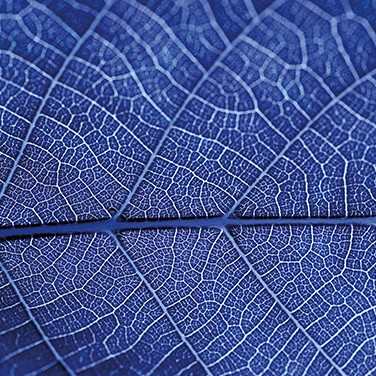Understanding the Way Plants Breathe
By Kylie Wolfe
For farmers, a successful crop yield requires the right combination of sunlight and rainfall. Many have drainage and irrigation systems to help manage floods and droughts, but sometimes it’s challenging to maintain the right balance for a thriving and healthy harvest.
Scientists at the Institute for Sustainable Food at the University of Sheffield may have found a new way to manage this. Just as oxygen gives us life, carbon dioxide fills the “lungs” of plants, and scientists now understand how. Their results were published in Nature Communications in June.
The presence of stomata, or pores, on a plant’s surface isn’t news to botanists. These tiny openings in the epidermis are the entry and exit point for gases traveling to and from plants’ intracellular spaces. They let carbon dioxide in and oxygen out during photosynthesis, but what happens beneath the surface?
Stomatal pores are connected to a complex network of air channels. The channels are like bronchioles, providing a way for carbon dioxide to travel from the atmosphere, through the pores on a plant’s surface, and to the mesophyll cells within. The stomata ultimately determine the airflow through these channels, ensuring that every cell is supplied with enough for proper function.
“Until now, the way plants form their intricate patterns of air channels has remained surprisingly mysterious to plant scientists,” said Andrew Fleming, professor at the University of Sheffield and a member of the research team.
But in collaboration with the University of Nottingham and Lancaster University, they were able to shed light on the development of these pathways.
Using X-ray CT image analyses, they examined species with different leaf structures and found that stomatal development determines the shape and scale of a plant’s air channels. But the stomata must be exchanging gases in order to expand the network.
That said, the more stomata found in a plant’s epidermis, the more airspace it will form underneath.
“This major discovery shows that the movement of air through leaves shapes their internal workings — which has implications for the way we think about evolution in plants,” said Fleming.
While scientists have known about the existence of stomata and the intricate network of air channels, they weren’t sure how the network managed to provide carbon dioxide to every cell. They created a 3D model of a plant’s cellular structure to visualize its inner networks and better understand how they develop.
Researchers also determined that by altering the internal structure of plant leaves, they can control how much water it needs. Other scientists have already bred wheat plants with this in mind, creating new versions with fewer stomatal pores. The result is a plant with decreased stomatal density, requiring less water to survive.
Stomata not only play an important role in gas exchange, they’re also the site of transpiration. The more stomata present, the greater the loss of water content to the atmosphere. Therefore, altering stomatal pores not only optimizes carbon dioxide intake, it also minimizes water loss.
Through studies like this one, researchers are hoping to find new ways to respond to the challenges of sustainable agriculture.
As scientists learn more about the relationship between stomata, air channels, and water use, they’ll have the tools to design more controlled crops that are more efficient and can survive changes in climate.
The Institute’s goal is to address the future of food security as it relates to current environmental concerns. Through studies like this one, researchers are hoping to find new ways to respond to the challenges of sustainable agriculture. Their work could help create more water-efficient and drought-resistant crops, including staple items like rice and wheat.
“The fact that humans have already inadvertently influenced the way plants breathe by breeding wheat that uses less water suggests we could target these air channel networks to develop crops that can survive the more extreme droughts we expect to see with climate breakdown,” said Fleming.
